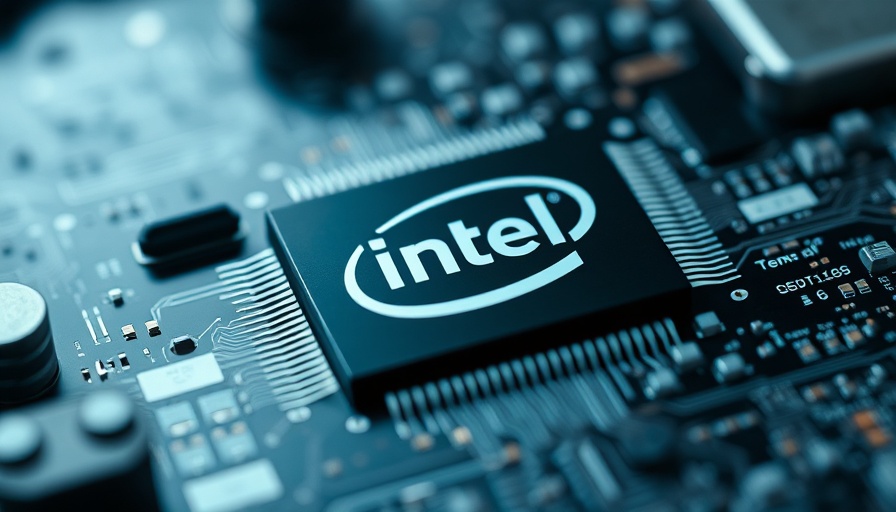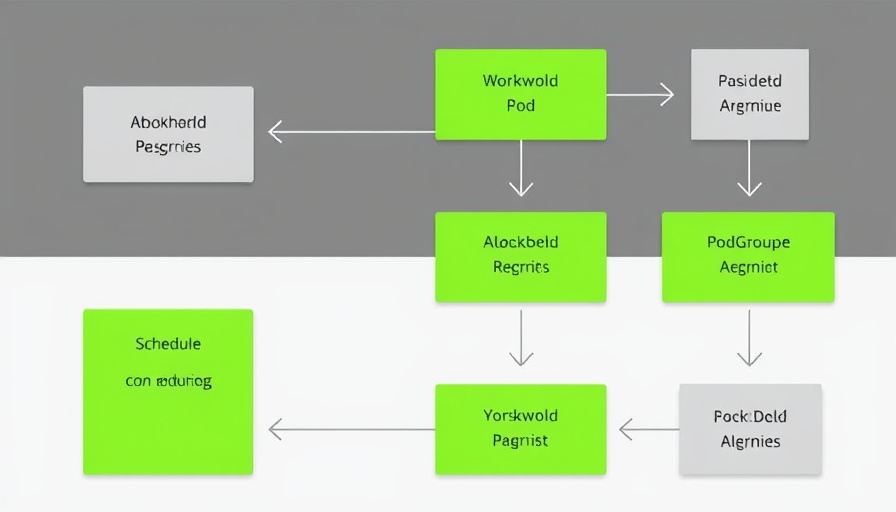
TSMC's Strategic Pitch: A New Era for Intel?
In the fast-paced world of semiconductor manufacturing, a potential shift is on the horizon as Taiwan Semiconductor Manufacturing Company (TSMC) approaches major U.S. chip designers including Nvidia, AMD, and Broadcom about a prospective joint venture involving Intel's struggling foundry division. Reports indicate that TSMC is seeking to take a stake of no more than 50% in this collaboration, aimed at revitalizing Intel's operations in a situation that has sparked significant interest across the tech landscape.
Understanding the Landscape: Why Intel Needs Support
The U.S. chipmaking industry is at a critical juncture, especially for a legacy giant like Intel. Following a staggering loss of $18.8 billion in 2024, the company has seen its stock price tumble, losing over half its value year-over-year. In light of these challenges, this proposed partnership could be pivotal for Intel, potentially providing the operational expertise of TSMC without losing complete control over its foundry division. This joint endeavor is not merely a lifeline for Intel but also presents a unique opportunity for collaborating companies to leverage advanced manufacturing capabilities.
The Political Dimension: Trump’s Influence on Semiconductor Manufacturing
Adding another layer of complexity is the involvement of the Trump administration. Sources indicate that TSMC's overtures to backers come at the request of U.S. policymakers, who are keen to bolster domestic advanced manufacturing capabilities. With the Trump administration wary of a fully foreign-controlled Intel, any agreement will require federal approval, necessitating a careful balancing act between foreign investment and national interests. The stakes are high, as successful collaboration could set an example for future partnerships in this vital industry.
Current Dynamics in the Semiconductor Field: Allies and Rivals
The nature of the partnerships being proposed highlights existing rivalries and competition in the semiconductor sector. Companies like Nvidia and AMD have historically been competitors to Intel, yet this joint venture could alter the dynamics. As both firms look to Intel’s advanced manufacturing processes — such as its 18A technology — they find themselves in a unique position where collaboration may offer benefits that outweigh the risk of competition.
Future Predictions: What Could This Mean for the Tech Market?
If this partnership comes to fruition, we could witness a significant realignment within the semiconductor market. TSMC's ability to implement best practices and advanced technology could transform Intel's operational abilities, leading to a potential resurgence. Moreover, as AI applications continue to rise, increasing the demand for semiconductors, successful collaboration may place the U.S. players in a stronger position to compete globally against rivals in Asia and beyond.
Emotions and Reactions from Industry Leaders
The potential for this partnership has sparked excitement and apprehension within the technology community. Industry insiders recognize that while the collaboration could mitigate Intel's troubles and usher in a “new era,” it also comes with risks, particularly associated with cooperative manufacturing and the sharing of proprietary technologies. Such partnerships demand trust and transparency, often challenging given traditional competitive dynamics.
As the dialogue evolves and discussions progress, all eyes will be on how these tech giants navigate their historical rivalries to potentially pave the way to innovation and advancement. Enthusiasts of artificial intelligence and entrepreneurs in the tech space will want to keep a close watch on these developments, as they can significantly influence future trends in AI and semiconductor technology.
Call to Action: Stay Informed on Tech Developments
As the landscape of semiconductor manufacturing evolves, it’s crucial for tech enthusiasts and professionals alike to stay ahead of the curve. Keep an eye on how these partnerships unfold, and consider the broader implications on technology and innovation. Follow trends and insights in the semiconductor and AI sectors to better understand what to expect in this transformative era.
 Add Row
Add Row  Add
Add 




 Add Row
Add Row  Add
Add 

Write A Comment